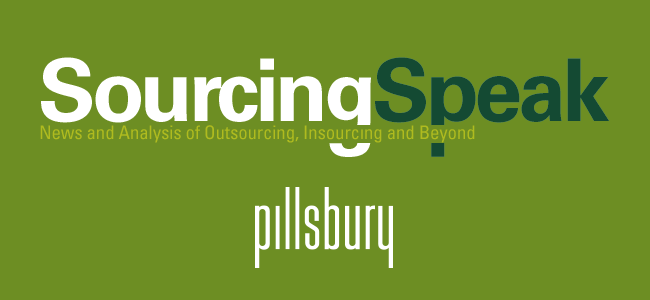This is the second of two postings that discuss SaaS pricing. In the earlier posting, we discussed the underlying economics of SaaS solutions and their implications for how SaaS services are priced. This posting identifies some key considerations in negotiating pricing for SaaS services that can help lower total subscription costs.
Committed Growth vs. Incremental Purchases
As a general matter, the higher the volume you commit upfront to a SaaS provider over the contract term, the higher the discount you can negotiate. However, this carries a risk that your projected growth may not materialize and you’ll wind up paying for a higher volume of service than you need. As a result, it is important to use the negotiation process to assess the level of upfront commitment to future growth that achieves the optimal balance between high discount levels and the risk of paying for more than you need.
In addressing this issue, you will want to:
- Spread the committed growth over the contract term based on when you expect it to materialize; that is, do not set volumes for contract year 1 based on where you expect to be in contract year 5.
- Lock in unit rates for incremental purchases over the contract term. Some SaaS providers take the position that the price of additional volumes will be negotiated at the time of purchase. This should be a non-starter since you may not have as much leverage to negotiate price during the middle of the contract term.
- Avoid large minimum purchase commitments on incremental purchases. SaaS providers often require a minimum block of units be purchased. In concept, this is reasonable in that it allows the supplier to avoid numerous tiny incremental purchases throughout the year and thereby more effectively manage administrative costs. In practice, however, SaaS providers sometimes propose minimum purchase requirements that are excessive in relation to the size of the deal. For example, in a recent transaction, a SaaS provider proposed minimum purchase increments of 500 units, which represented a 20% increase in the size of the deal. Any minimum purchase requirements should make sense in light of the size of the deal.
Timing Considerations
As noted in Part 1 of this posting, SaaS providers typically require that the full subscription fee start at the time the service is first made available to commence configuration and implementation efforts. There are some approaches that can help mitigate the impact:
- If subscribing to multiple modules that will be implemented at different times, stagger the subscription start dates to coincide with the commencement of implementation efforts for those modules.
- If the go-live date for a SaaS service is expected to occur in a later subscription period than the commencement of implementation efforts, SaaS providers will sometimes agree to a nominal volume in the subscription metric (e.g., users) during the subscription period preceding the go-live date.
Swap Rights
If your are subscribing to multiple SaaS modules with different metrics or the volume of usage may vary by module, you should consider negotiating swap rights. Swap rights permit you to trade in unused units of one module for additional units of another module. This can help optimize the value received for your subscription fees.
Subscription Metrics
You should pay close attention and understand how the SaaS provider defines the volume metrics used to price the services. This will be important in developing the projections used for pricing purposes. Lack of clarity on the metric definitions can result in unpleasant surprises once you’re in the deal.
In particular, you should be alert to metrics that are not tied directly to the number of users you specifically authorize to use the service. For example, the total number of employees in your organization may be used to measure the volume of usage for some SaaS services (e.g., recruiting or onboarding products in the HR space). This can be difficult to monitor on an ongoing basis and may fluctuate throughout the year.
Therefore, you may want to try to limit pricing adjustments to the number of employees at the commencement of each subscription year without any adjustments during the year. In addition, you may want to negotiate the flexibility to carve out any subsidiaries or divisions of the enterprise that will not be using the SaaS service. This can helpful in reducing costs in connection with mergers and acquisitions by being able to avoid being tagged with the employee count of the acquired company until you’ve moved it onto the SaaS service.
Support Plans
Many SaaS providers offer different levels of support (e.g., standard, premium, platinum). While it may make sense to purchase the highest level of support in the first couple years as you come up the learning curve on the SaaS service, you may find that you do not need (and do not want to pay for) such a high level of support thereafter. You should therefore consider negotiating an option to change support plans at any time (or at least at the beginning of each annual subscription period) with a corresponding adjustment in annual support fees.
Renewals
As long as the transition to an alternate solution is not unusually difficult or costly, you will likely have leverage in negotiating favorable pricing for renewal terms because of the strong incentive SaaS providers have in retaining existing customers (rather than the bear the high cost of attracting a new customer to offset the attrition). That said, it is still advisable to negotiate renewal options upfront with caps on any price increases during the renewal terms.
